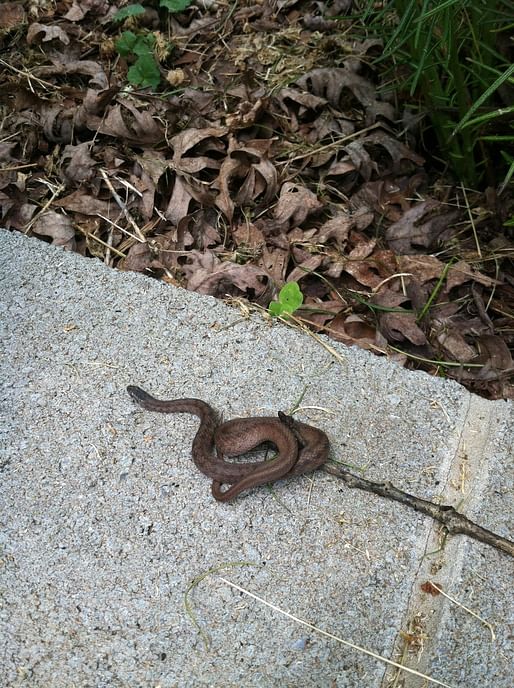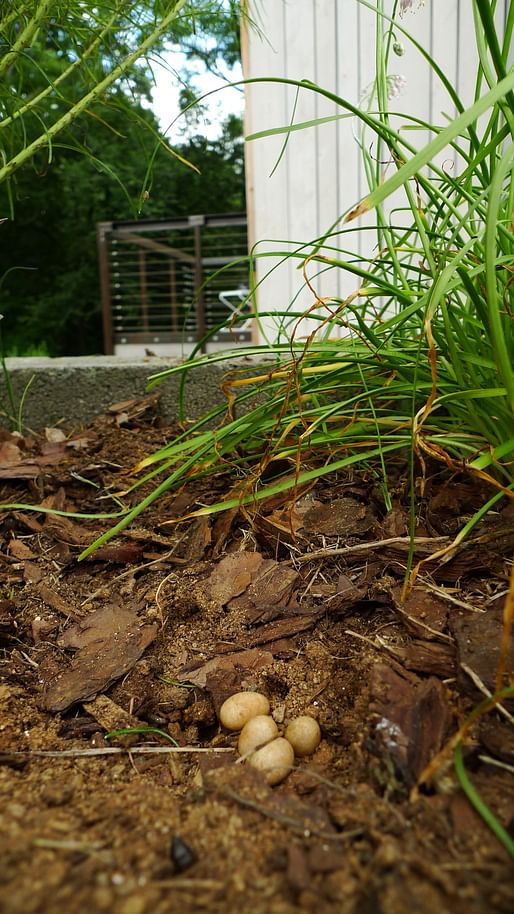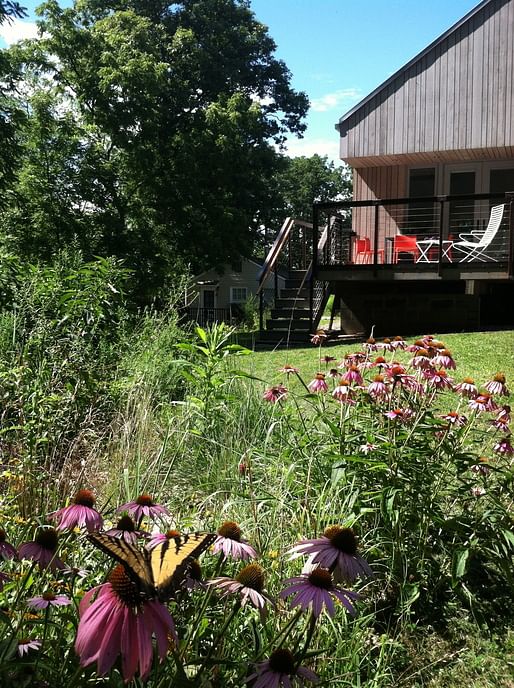
This month marks one year for me as a resident at the New Norris House. As a previous resident of various apartments near the center of Knoxville, one of the most interesting aspects of living in Norris has been the increase in time I’ve spent outdoors and the animals I’ve happily encountered along the way.
One frequent visitor is the brown snake. I’ve seen several of these (or maybe it is the same one?) around the landscape this summer. They are friendly snakes and don’t mind to be picked up and relocated away from the main walkways to the terraced gardens.

While weeding the perennial bed this nest of small eggs was discovered. I had noticed several dozen juvenile five-lined skinks in the area. A little online research indicates that these are five-lined skink eggs

 Everyday, hundreds of bees, flies, dragonflies, and butterflies visit the rainwater and greywater beds and the meadows and perennial beds. The black-eyed susan’s and purple coneflowers are a favorite as well as the nodding onions and the passionflower vines, which are frequented by big, buzzing bumblebees.
Everyday, hundreds of bees, flies, dragonflies, and butterflies visit the rainwater and greywater beds and the meadows and perennial beds. The black-eyed susan’s and purple coneflowers are a favorite as well as the nodding onions and the passionflower vines, which are frequented by big, buzzing bumblebees.
The animals seen on a regular basis in the New Norris House landscape are not rare or threatened in East Tennessee, but every time I see one of them it brings a sense of joy and wonder to my day. However, it seems that it is becoming increasingly difficult to find these animals in many urban and suburban residential yards. Additionally, there is a growing body of research indicating that humans, especially young people, are not spending enough time outside engaged with plants and animals.
Fortunately, landscape methods, such as pesticide-free gardening with native plants and establishing small patches of native grass meadows as a lawn alternative, can create habitat for these and other species in urban and suburban yards. Native plantings are easier to care for than many non-natives because natives have evolved defenses against local predators and adaptations to thrive under local weather patterns. The reason native plants attract so many beneficial species of wildlife is also because they evolved together – with the plants providing food and shelter in return for species-specific relationships with the animals that pollinate or spread their seeds.
The New Norris House landscape is an example of how alive a suburban residential yard can feel.
The New Norris House is a design/build effort from the University of Tennessee's College of Architecture and Design. Began in 2009, the home was designed and built by UT students in collaboration with Clayton Homes. The built project is now complete and the final phase of the project has begun. A team of 4 people (2 living in the home, and 2 graduate researchers) will rigorously document the experience via qualitative assessments and quantitative measurements, posting results to this blog.





No Comments
Block this user
Are you sure you want to block this user and hide all related comments throughout the site?
Archinect
This is your first comment on Archinect. Your comment will be visible once approved.